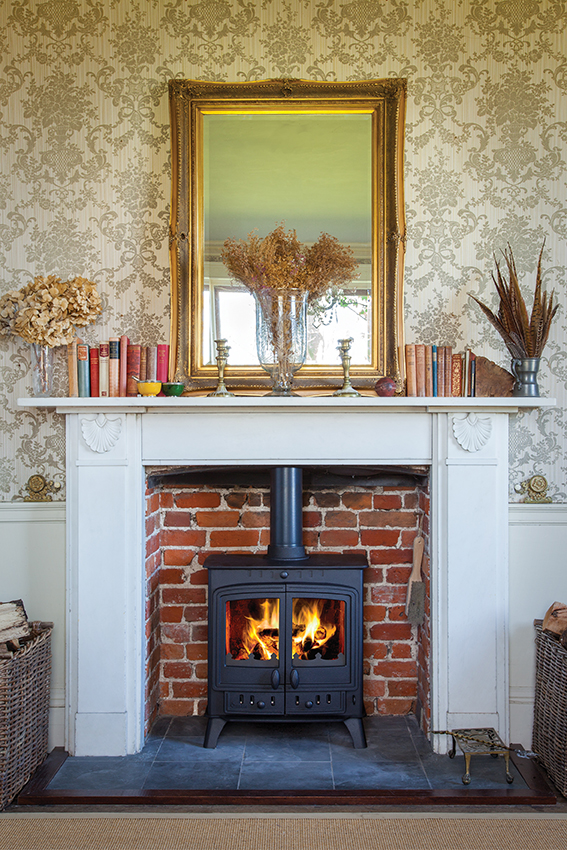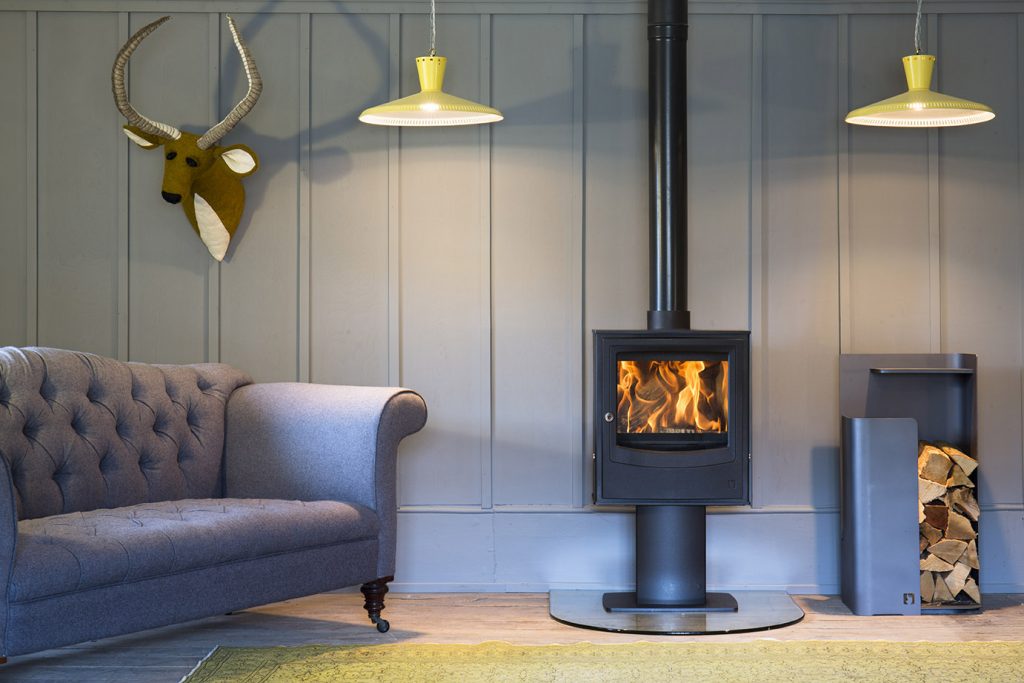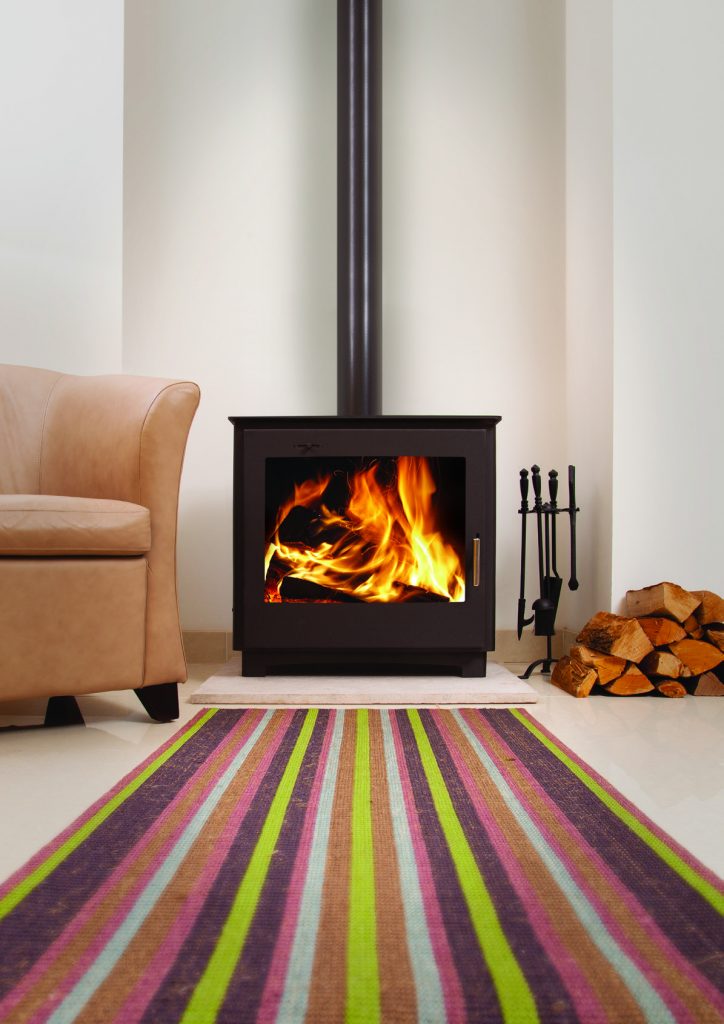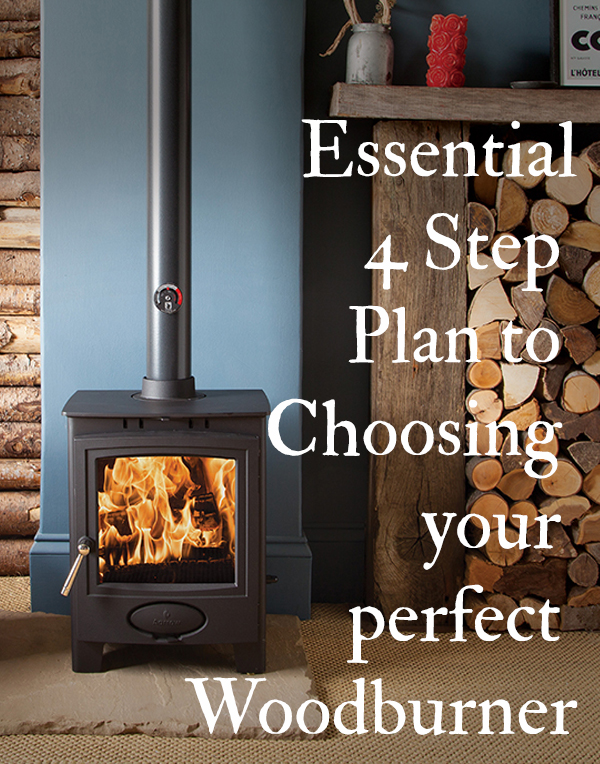Stoves are not only a stylish option for the home, but are also eco-friendly and super-efficient (and allegedly add value too. Some bandy a 5% increase on house value, others suggest it’s more about saleability than actual cash value… but either way, you’re winning when it’s time to sell up). In fact, never mind when you’re selling up; a stove can be up to three times as efficient as an open fire and will greatly reduce your fuel costs.
Safe and controllable, you have the warmth of a real fire and dancing flames; all whilst saving money!
But how do you go from that ugly old gas fire (or a boarded up fireplace, or any of 100 other alternatives you may currently have) to that roaring glowing box of heat and comfort in your living room?
We did it last year, and at the start if felt like a totally overwhelming task. We hadn’t the first clue about woodburners, and decided that going shopping for one we fancied seemed a good way to begin.
Silly us.
If we’d answered a few simple questions first, we’d have had a much more successful initial shopping trip! We had a few experts holding our hands along the way, so I thought I’d pass on the favour and share the 4 Step Plan to Choosing your perfect Woodburning Stove.

Timeless Classics
Epitomising traditional design, these stoves are always at home with their abundance of charm and character.
***Suggested retail price for the Duo starts at £729 inc VAT.
1 – How Do I Know What I Can Have?
Once you’ve decided you want a stove, the first thing to do is to find out your exact requirements so that your chosen stove is suited to you and the space in which you wish to install it.
Stoves can practically be installed anywhere- a grand fireplace in a country home, freestanding in your kitchen, a tiny log burner for a caravan or workshop or even a bathroom. Many factors play a role in determining whether a chimney, flue or fireplace is suitable for a stove installation – and you need to ensure it is installed correctly to ensure full compliance with CE certification and UK building regulations.
We were installing ours on a plasterboard wall as it’s in the new extension and there was no pre-existing chimney – that added a whole level of extra work we weren’t expecting; who knew plasterboard is not fire-retardant?!
For this reason, we strongly recommend that you have a registered competent person (such as those registered as HETAS engineers or other member of a Competent Person Scheme) carry out a full site survey and inspect the suitability of your fireplace and chimney and advise on the right product for you.
2 – What output do I need?
As a very rough guide measure the room:
Multiply width x depth x height (in metres) and then divide this by 14. This will give you the average heating requirement in kilowatts.

Contemporary Living
An elegant feature slotted neatly into a bright, spacious room or a dramatic centrepiece that provides wow factor, contemporary stoves let you create the look you want. Clean-cut lines and big viewing windows emphasise the beauty of the fire whilst top efficiency ratings ensure you get the most from your fuel.
***Suggested retail price for the Farringdon starts from £1099 inc VAT
3 – Fuel types
Multi fuel stoves are great as they give you freedom of choice on what to burn, allowing efficient burning of wood or solid fuel. For solid fuel burning, only approved anthracite or lignite-based smokeless fuels can be used. The benefits of burning solid fuel is that it can burnt immediately, needs less refuelling and will provide more heat than a similar volume of firewood.
Wood burning stoves are the ecological choice and whilst it requires a little effort and planning, you will reap the rewards.
Sustainably sourced wood is a carbon neutral fuel – the amount of carbon dioxide it emits when burnt is only equal to the amount absorbed during the life of the tree. Seasoned hardwoods such as ash, beech and oak will burn with a high and long lasting heat output.

Hardworking Heating
Arada’s boiler stove offer the perfect fusion of style and practicality providing hot water and heat to your home. Economical, reliable and sustainable.
***Suggested retail price for the Ecoboiler Wood starts from £1987 inc VAT
4 – Which type of stove?
Once you know all of the above, then it’s time to go shopping – it’s all down to a question of style! You can pick from the most versatile of freestanding stoves, an inset which is designed to replace an open fire utilising an existing fireplace, or a cassette stove which can be recessed into a wall at hearth height or installed at an elevated height.
And don’t forget that alongside standard wood and multi fuel stoves, there are also boiler stoves – these not only heat the room, but also provide hot water, providing an alternative to a traditional heating system or working combination with them.
Pin It For Later!


